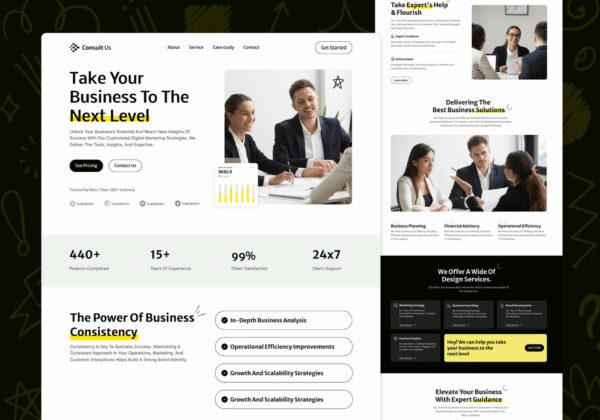
A Journey Through Two Decades of Digital Transformation
When we say the web has changed dramatically over the past 20 years, it’s not just about flashier websites or sleeker designs—it’s about an entire ecosystem that has evolved at breakneck speed. Sitting here in Columbia, South Carolina, working with some of the most talented web designers at Web Design Columbia, I can’t help but marvel at how far we’ve come and how much we’ve learned along the way.
I still remember when websites were little more than glorified brochures with awkward color schemes and Comic Sans fonts. Back then, adding a GIF that danced on the corner of the page was cutting-edge. Fast forward two decades and the digital world has shifted to immersive, user-centric designs. Let’s dive deep into this transformation, unpack the technologies that have defined this journey, and see how Columbia web designers are shaping the future.
From Static to Dynamic: The Shift That Changed Everything
In the late 1990s, most websites were static—unchanging digital billboards coded with basic HTML. If you wanted to update content, you’d need a developer armed with Notepad and patience. Then came the Content Management Systems (CMS), like WordPress and Joomla, which democratized web design. Suddenly, anyone could create a website, and platforms like WordPress quickly became dominant, powering over 43% of all websites globally today.
Yet, even WordPress has faced its share of criticisms. Frequent updates sometimes break plugins, and there’s the age-old complaint about performance issues on poorly configured hosting setups. The team at Web Design Columbia knows these challenges well and often finds themselves rescuing websites bogged down by slow load times or plugin conflicts.
The Rise of Responsive Design
Do you remember trying to browse a website on your first smartphone? Pinching and zooming to read a single paragraph wasn’t just frustrating—it was a workout for your fingers. Responsive design was the solution, which adapts websites to different screen sizes. Ethan Marcotte’s seminal 2010 article introduced the concept, and soon, it became a non-negotiable feature for websites everywhere.
Now, responsive design isn’t just about resizing elements. It’s about creating experiences tailored to devices. Columbia SC web design companies like Web Design Columbia take this further, considering everything from mobile network speeds to thumb-friendly navigation. After all, it’s not just about fitting on a screen—it’s about thriving on it.

Big Companies and the Big Data Era
In the 2010s, big data reshaped web design. Companies like Amazon and Google began leveraging data to optimize every aspect of user experience. Amazon, for instance, uses A/B testing extensively, making thousands of micro-adjustments daily to boost conversions. This practice trickled down to smaller businesses, and now even Columbia web designers are integrating analytics and heatmaps to refine designs.
But here’s the catch: the push for data-driven design sometimes comes at the cost of creativity. There’s a growing criticism that websites, in their quest for optimization, are starting to look eerily similar. The challenge for Columbia SC web design companies is balancing analytics with artistry—a balance Web Design Columbia excels at.
Hosting Wars: The Platform Debate
If you’ve ever been cornered by a tech-savvy friend waxing poetic about hosting providers, you’ll know this is a hot topic. Back in the day, GoDaddy was synonymous with hosting. Today, the options are endless: AWS, DigitalOcean, Azure, BlueHost, Hetzner, and more.
Each platform has its pros and cons. AWS, for example, offers unparalleled scalability but can be intimidating for non-technical users. Hetzner, a favorite among budget-conscious developers, sometimes lags in customer support. Columbia SC web design agencies often guide businesses through this maze, helping them choose the best platform based on their needs. And trust me, the wrong choice can mean the difference between a website that thrives and one that crashes under a Black Friday rush.
SEO and the User-Centric Revolution
In the early days, SEO was a game of keyword stuffing and shady backlink practices. Today, search engines like Google prioritize user experience. Websites must load quickly, be easy to navigate, and provide value. Columbia web designers have embraced this shift, focusing on clean designs and fast-loading pages that rank well organically.
Yet, not everything is perfect. Google’s ever-changing algorithms can be a nightmare for businesses. One day, you’re on page one; the next, you’re buried. It’s a rollercoaster ride, but agencies like Web Design Columbia have the expertise to adapt to these changes and keep businesses visible.
Looking Back to Look Forward
The evolution of web design is as much about the lessons learned from missteps as it is about groundbreaking innovations. Flash, once the darling of interactive websites, is now a relic. With its overly literal aesthetics, Skeuomorphic design gave way to flat design and then to the modern blend of minimalism and realism.
Every trend and technology tells a story, and in Columbia, South Carolina, Web Design Columbia has been at the forefront, not just following trends but shaping them.
Lessons for the Future of Web Design
As we’ve journeyed through the past two decades of web evolution, it’s clear that web design is not just about aesthetics; it’s about creating seamless experiences that engage, inform, and convert. Looking ahead, there’s much to anticipate—and plenty of lessons to keep in mind.
The Role of AI in Modern Web Design
Artificial Intelligence (AI) has already started transforming web design. From AI-driven design platforms like Wix ADI to advanced chatbots powered by OpenAI’s ChatGPT, AI is making web design faster and more accessible. Large companies like Shopify have implemented AI tools to recommend product layouts or even optimize pricing strategies for e-commerce stores.
Yet, there’s a growing concern about the limitations of AI in web design. AI-generated designs often lack the human touch, the subtle nuances that make a website truly unique. This is where Columbia SC web design companies like Web Design Columbia come in—combining the efficiency of AI tools with the creativity of skilled designers to deliver one-of-a-kind websites.
Mobile-First Is No Longer a Choice
We’ve moved past the era of mobile-friendly design into a mobile-first reality. Statista said mobile devices accounted for 58.43% of global website traffic in 2023. If your website doesn’t shine on mobile, you’re invisible to half your potential audience.
But designing for mobile isn’t just about resizing text and images. It’s about rethinking navigation, prioritizing key content, and ensuring fast load times. Progressive Web Apps (PWAs), combining the best of websites and mobile apps, are becoming popular. Companies like Starbucks have leveraged PWAs to increase user engagement, a practice that’s trickling down to local businesses.
Here in Columbia, Web Design Columbia specializes in mobile-first designs, ensuring businesses survive and thrive in this mobile-centric world.
Balancing Creativity and Performance
One of the biggest challenges in web design today is balancing creativity with performance. A website that is too flashy may load slowly, alienating users before they even see the content. On the other hand, a bare-bones design might lack the visual appeal to keep users engaged.
Consider websites like Apple’s. They’re visually stunning yet incredibly fast and intuitive. How do they achieve this? Investing in cutting-edge technology like optimized CDN networks and finely tuned back-end systems.
Replicating this balance can be tricky for small businesses. That’s where a Columbia web design agency can help, offering scalable solutions that prioritize both form and function.
The Accessibility Imperative
Accessibility has gone from being an afterthought to a critical component of web design. With legal frameworks like the Americans with Disabilities Act (ADA) and international standards like WCAG, businesses are now expected to make their websites accessible to everyone.
But accessibility is about more than compliance—it’s about inclusivity. Features like screen-reader compatibility, keyboard navigation, and color contrast improvements make a difference. Interestingly, large companies like Domino’s Pizza have faced lawsuits over inaccessible websites, proving that even giants can falter.
Web Design Columbia integrates accessibility from the ground up, ensuring that websites meet global standards while still looking fantastic.
Sustainability in Web Design
Sustainability is becoming a hot topic in web design. Did you know that the internet’s carbon footprint is estimated to rival that of the aviation industry? Every website you visit consumes energy, and large-scale platforms like YouTube or Facebook leave a significant environmental impact.
Innovative companies are now looking at ways to reduce this footprint. Google, for instance, has committed to running entirely on renewable energy. Web designers are following suit, optimizing code, reducing server loads, and even choosing eco-friendly hosting providers like GreenGeeks.
In Columbia, South Carolina, Web Design Columbia is part of this movement, offering solutions that perform well and align with sustainable practices.
The Human Touch in a Digital World
As technology advances, it’s easy to lose sight of the human connection that makes websites memorable. A beautifully designed website means nothing if it doesn’t resonate with its audience.
One fascinating trend is the resurgence of storytelling in web design. Brands like Patagonia and Airbnb use their websites to tell stories that connect with their users on a deeper level.
At Web Design Columbia, we believe that every website has a story to tell. Whether it’s a small local business or a larger enterprise, our designs are crafted to reflect each client’s unique journey.
The Columbia Advantage
As a city, Columbia combines the charm of Southern hospitality with the dynamism of a growing tech scene. This blend is reflected in the work of Columbia web designers, who bring both creativity and innovation to their projects.
Web Design Columbia has been part of this journey for nearly two decades, adapting to new trends, overcoming challenges, and delivering results that speak for themselves. From sleek e-commerce stores to intuitive content management systems, we’ve seen it all and are ready for what’s next.
Give Us a Call
Looking back on two decades of web innovation, it’s clear that web design is both an art and a science. The lessons we’ve learned along the way—about technology, creativity, and user experience—are what drives us to keep pushing boundaries.
If you’re ready to take your web presence to the next level, Web Design Columbia is here to help. Whether you need a cutting-edge design, mobile-first strategy, or sustainable solutions, we’ve got you covered. Let’s build something amazing together—right here in Columbia, South Carolina.